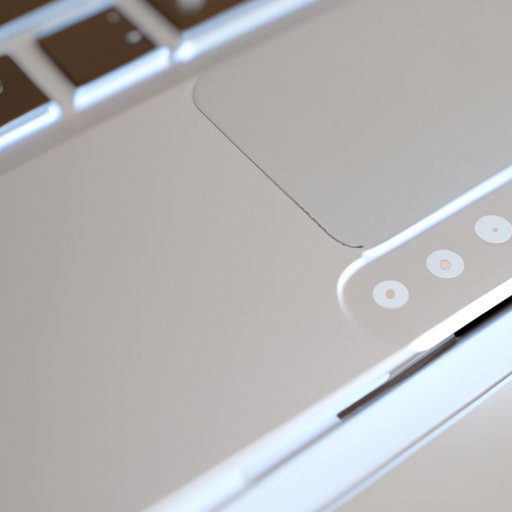Introduction
If you’re experiencing technical difficulties with your Mac Air or simply want to start fresh, knowing how to factory reset your computer is an essential skill. In this article, we’ll guide you through the process step-by-step, including troubleshooting tips for common issues and best practices for maintaining a clean computer. By the end of this guide, you’ll feel empowered to take on the task of resetting your Mac Air yourself.
Step-by-Step Guide to Factory Resetting a Mac Air
Before we get started, it’s important to understand what a factory reset is and when/why it should be used. Essentially, a factory reset erases all data and restores your Mac Air back to its original settings as if it just came out of the factory. This can be useful in a number of scenarios, such as:
- Preparing to sell or give away your Mac Air
- Resolving persistent technical issues
- Starting fresh with a clean slate
To factory reset your Mac Air, follow these steps:
- Back up your files: Before resetting your Mac Air, be sure to back up any files you want to keep to an external hard drive or iCloud.
- Sign out of all accounts: Next, sign out of all accounts on your Mac Air, including iCloud, iTunes, and iMessage.
- Use recovery mode to erase the hard drive and start anew: To start the factory reset process, restart your Mac Air and hold down the Command and R keys until you see the Apple logo. This will boot your Mac Air into Recovery Mode. From there, select “Disk Utility” and erase the hard drive, making sure to select “Macintosh HD” as the target disk. Once the erase is complete, exit Disk Utility and select “Reinstall macOS.” Follow the prompts to reinstall the latest version of macOS and set up your Mac Air as if it were new.
It’s important to note that this process will erase all data on your Mac Air, so be sure to back up any important files beforehand.
For additional guidance, refer to the screenshots below:



Troubleshooting Tips for Common Issues
While the factory reset process is straightforward, there are a few common issues you may encounter. Here are some troubleshooting tips:
- Failure to boot into recovery mode: If you’re having trouble booting into recovery mode, try restarting your computer and holding down the Command and R keys again. If the issue persists, try holding down the Option key instead and selecting “Recovery HD” from the boot menu.
- Inability to erase the hard drive: If you’re unable to erase the hard drive, make sure you’ve selected the correct target disk and format (APFS or Mac OS Extended). You can also try restarting your computer and holding down Command + Option + R to perform an internet recovery, which may help troubleshoot the issue.
- Other error messages or issues: If you encounter any other error messages or issues during the factory reset process, consult Apple’s support website or seek assistance from a trained technician.
Personal Anecdote and Lessons Learned
As someone who has factory reset multiple Mac Airs in the past, I understand that the process can seem daunting at first. However, I can assure you that with proper preparation and the right mindset, it’s a manageable task. One of the most important lessons I’ve learned is the value of backing up your files regularly. By doing so, you can feel confident knowing that even if something goes wrong during the factory reset process, your important files will be safe and sound.
Best Practices for Maintaining a Clean Mac Air
After you’ve successfully factory reset your Mac Air, it’s important to maintain a regular cleaning and maintenance schedule to keep your computer running smoothly. Here are some best practices:
- Back up your files regularly: As we mentioned earlier, backing up your files regularly is essential for maintaining peace of mind and avoiding data loss.
- Maintain a regular cleaning and maintenance schedule: This may include clearing out your downloads folder, running disk cleanup tools, and updating your software regularly.
If you’re looking to learn more about maintaining a clean and healthy Mac Air, consider checking out Apple’s support website or joining a Mac user group to connect with other Mac enthusiasts.
Comparison with Alternative Factory Reset Options
While the built-in factory reset option is a reliable choice for many users, there are also third-party alternatives available. These may offer additional features, such as the ability to securely erase data and prevent data recovery. However, it’s important to research and compare your options carefully before making a decision. Consider factors such as cost, ease of use, and reviews from other users to determine which option is best for your needs.
Conclusion
Knowing how to factory reset your Mac Air is an essential skill for any Mac user. By following the step-by-step guide provided in this article, you can take control of the process and ensure that your computer is running at its best. Remember to back up your files, troubleshoot any issues that arise, and maintain a regular cleaning and maintenance schedule to keep your Mac Air in top condition.
